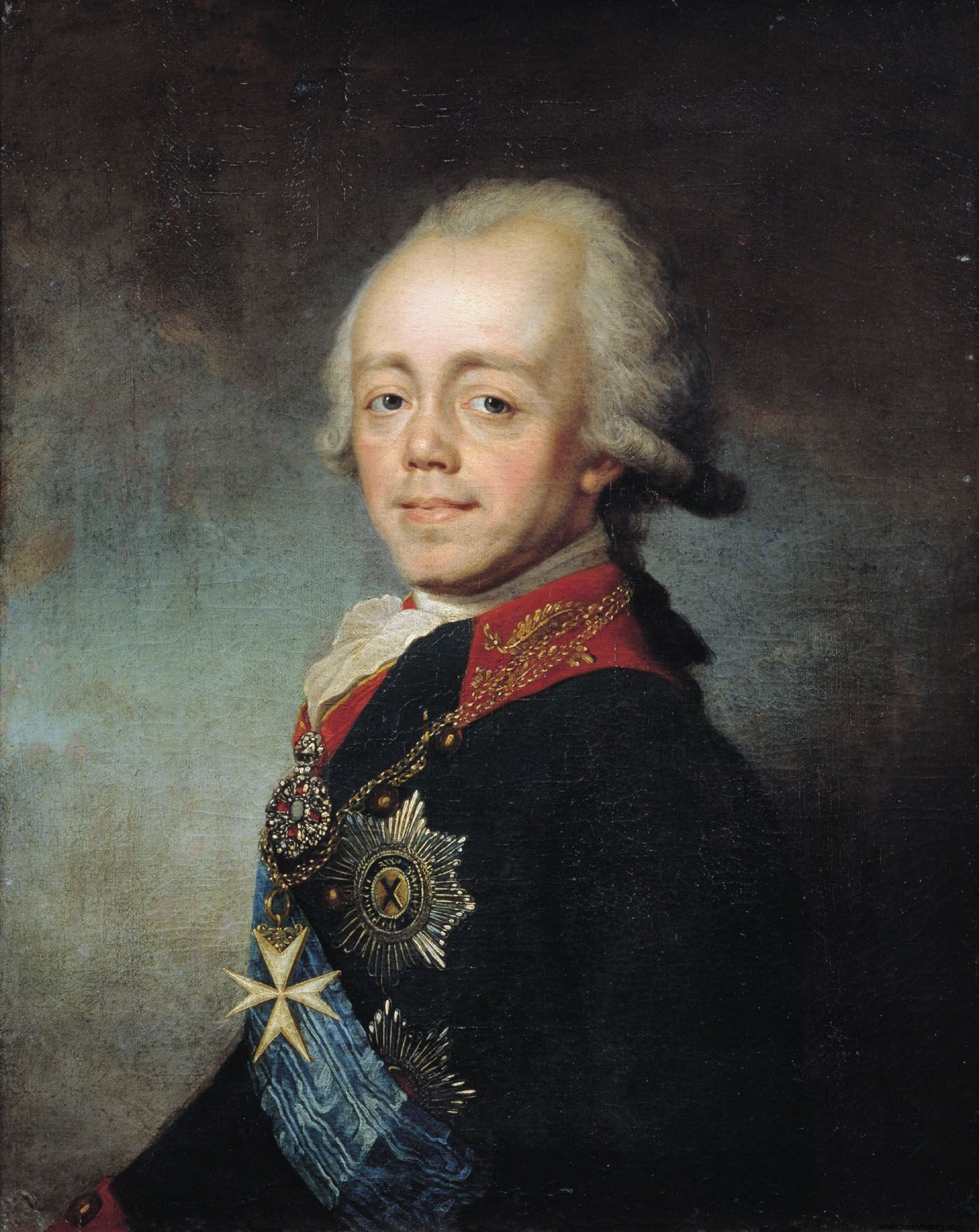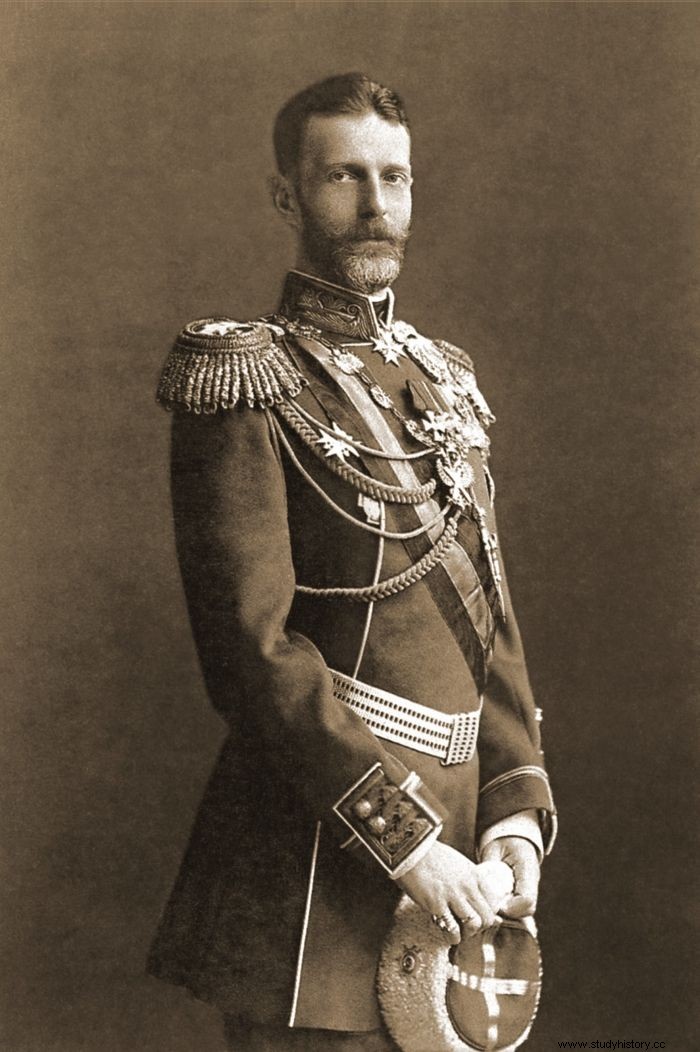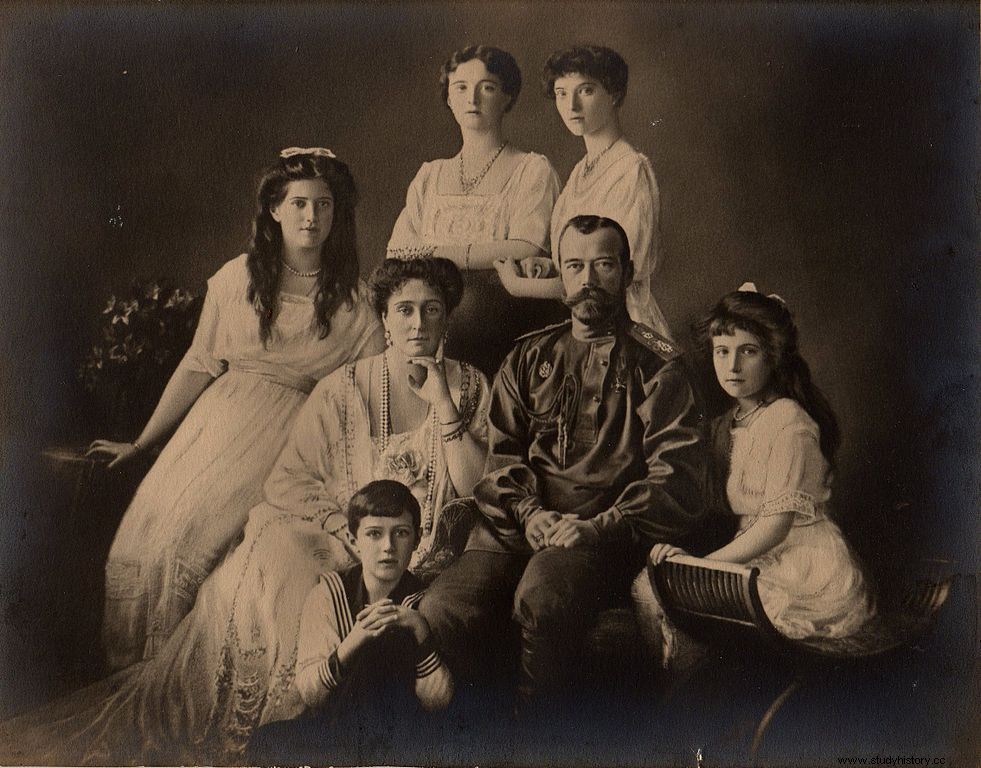Crushed faces and massacred legs. Body remains scattered around the area. Hours of agony in the mine shaft. Sounds like an arsenal of terrifying practices straight from thriller series? Meanwhile, this is what the death of many representatives of the shaking dynasty of the Russian Empire looked like.
Murders of members of the ruling family were not uncommon in Russia. Already in the 18th century, the Romanovs suffered many tragedies, ranging from the mysterious death of the only son of Tsar Peter I, through the strangulation of Tsar Peter III, to the murder of Tsar Ivan VI. But the worst - and most monstrous - was yet to come.
Pulp instead of face
Tsar Paul I, reigning in 1796-1801, did much to hate him. Finally it came to a conspiracy against him.
On March 11, 1801, the conspirators, under the influence of alcohol, burst into the Winter Palace and stormed the tsarist apartments. They found an empty bed, but they didn't have to look far - the Emperor's two bare feet were sticking out from under the screen . The conspirators told him that he had been arrested. They wanted to force him to abdicate, but Paweł shouted that he would not sign the document he was given.
A real fight broke out in the twilight. The tsar fiercely defended himself, even when Nikolai Zubov, brother of the last lover of the tsarist mother, hit him in the face with a massive snuffbox. He crushed his cheekbone and knocked out his eye. Soon the monarch's face turned into a great bloody wound.

Portrait of Paweł I Romanow by Stepan Szczukin.
It took a few men to finally break Paul's resistance. One of them held the tsar by the hair and banged his head on the floor. Then the assassins tightened the sash found over his bed around the ruler's neck. The monarch defended himself to the end. He tucked his fingers under the noose until he finally stopped breathing. Even the corpse was not forgiven - the conspirators kicked, trampled and dragged the body on the floor.
Life flowed from his shattered legs
Alexander II, who ruled the Empire in the years 1855-1881, miraculously repeatedly emerged from attempts on his own life. The tsar, whose bullets and bombs didn't bother, might already feel indestructible ... but he wasn't.
On March 3, 1881, the monarch experienced another outburst. The load thrown into his carriage killed and injured several people, but he survived unscathed. He was curious about the victims, talked to the police and even to the perpetrator .

The article was inspired by the Polsat Viasat History series titled "Murders in the Shadow of the Crown". Airing every Thursday at 10:10 pm starting on July 27.
Meanwhile, another bomber, a Polish student, Ignacy Hryniewiecki, was in the crowd of onlookers. While Alexander was looking at the hole in the road, the boy threw the load right at his feet.
The new explosion stunned the audience. The explosion tore the tsar's side away. One leg was torn off and the other was completely shattered. Parts of the body hung on pieces of leather. As Adrian Dworżycki recalls:"There were shreds of clothes, epaulettes, sabers and pieces of human bodies on the blood-splattered snow."
Alexander was still alive and quietly whispered, "I'm cold, I'm cold." With the last of his strength, he ordered that he be taken to the Winter Palace.

A graphic by Gustav Broling depicting the assassination attempt on Alexander II.
Grand Duke Alexander Mikhailovich, the ruler's nephew, recalled this day as follows:"We were shown the way to the tsar's office large stains of black blood on the marble stairs (...). Emperor Alexander (...) looked terrible. (…) Countless wounds covered the head and face. ”
The image is completed by a letter from the emperor's daughter-in-law, Maria Fedorovna:"the legs were completely crushed, torn to the knees to such an extent that at first I did not know what I was looking at:some bloody pulp with a fragment of a shoe on the right foot - only the sole of the foot was left! I have never seen anything like it in my life; no, that was terrifying. ”
Both shattered legs were cold. Doctors tried to stop the bleeding and put bandages on, but knew they were doomed to failure. Alexander II passed away on the same day.

Konstantin Makowski, "Portrait of Alexander II on his deathbed" (1881).
Tears in human mush
Alexander II's son, Grand Duke Sergei Aleksandrovich Romanov, belonged to the immediate circle of Tsar Nicholas II. Not only was he his uncle, but he also married the tsarina's sister, Elizabeth. He became famous as a repressive general-governor of Moscow during the Russo-Japanese War (1904-1905). After the bloody Sunday of January 1905, when one of his brothers ordered a brutal crackdown on the protesting workers, the desire for retaliation against the tsarist family had reached a critical level. Sergey was the perfect target.
As early as on February 2, 1905, Ivan Kalayev, an activist of the Socialist Revolutionary Party, was waiting with a bomb along the Grand Duke's route. However, he did not dare to throw her. At the last moment, he noticed that Sergei was going with his wife and two children. They were the little nephews he had raised. The bomber didn't want their blood on his hands.
Two days later, Kalayev did not hesitate anymore. He threw the load from a meter and a half directly under the wheels of Sergei's carriage. The Grand Duke was torn to shreds. The explosion ripped off his arms and legs. Only the rear wheels remained of the carriage.

Grand Duke Sergei Alexandrovich Romanov became famous as Moscow's repressive governor-general during the Russo-Japanese War.
Sergius' head, shoulder, one leg and one arm were never found. Other fragments of the aristocrat's body - fingers, one leg, foot and heart - fell to the pavement and roofs of the surrounding buildings. A ragged naked torso lay among the smoking ruins.
For many months, specialists figured out which part of the human pulp left over from the explosion belonged to Sergei. The funeral did not take place until June 1906. Since the shreds were difficult to reconstruct, the body was tightly obscured against custom. In the tomb, a life-size rag doll is buried . Three jars filled with wax were placed at the mannequin's legs. They contained the body fragments that investigators identified as Sergei's mortal remains.
Elizabeth, widow of the great prince, forgave the attackers and became a nun. But she did not miss the cruel death ...

Only the rear wheels remained of the Grand Duke's carriage.
Diamond armor on the bloody ice rink
The brutal murder of the members of the immediate family of Tsar Nicholas II still arouses enormous emotions. The ruler, his wife Aleksandra, their five children - Olga, Tatiana, Maria, Anastasia and Alexy - and four servants were brought to the basement of Ipatiev's house in Yekaterinburg on the night of July 16-17, 1918. They were to wait there for evacuation.
The prisoners behaved calmly. Nobody cried or asked anything. They did not expect what awaited them until the Chekist leader Yakov Yurovsky announced:"Due to the fact that your relatives are still attacking Soviet Russia, the Ural Executive Committee issued an order to execute!".
The former tsar asked to read the sentence again, but even after that, he was still stunned, "What? What?". In response, Yurovsky shot him straight in the chest. The others also aimed their weapons at Santa. More bullets shook the body until the monarch fell to the floor. Aleksandra got a close-up shot in the head. They both died right away - for their luck.

Photo taken after the announcement of the engagement of Nicholas with the Hessian princess Alice (1894).
The shootout quickly turned chaotic. The roar of the shots was deafening, nothing was visible. Missiles flew in all directions. One of the enforcers was wounded in the hand, and Jurowski almost died from a bullet that flew past his head. A break had to be ordered.
When the thick smoke, dust and dust settled, it turned out that the tsarist children were practically intact. Alexei was crawling in his parents' blood . He was shot at several times, but the boy was still alive. Stabbing with a bayonet didn't help either. Finally Yurovsky shot the tsarevich in the head. The other soldiers bayoneted the boy's sisters until their maddened screams stopped. As Simon Sebag Montefiore writes in his book "Romanowowie 1613-1918":
Jurowski shot Tatiana in the back of the head, splashing Olga with a "fountain of blood and brain", then the bloodied Yermakov knocked Olga over and shot her in the jaw, (after which) she turned and stabbed Maria in the chest, but "the bayonet wouldn't pierce her bra", so Ermakov shot the girl.
Finally, only Anastasia remained alive. The bayonet slipped over her body and hit the wall. She fought fiercely for her life and finally got a bullet in the head.

Photograph of the Romanov family, circa 1912.
Even after their death, the bodies of the tsar and tsarina were abused in such a way that bone fragments stuck into the wooden floor. The 10-minute shambles made the floor, covered in a mixture of blood and brains, slippery like an ice rink.
After the execution was over, the bodies - or what was left of them - were wrapped in sheets and dragged outside. Soft moans began to be heard from under the cover as they were loaded onto the car. One of the girls, Maria or Anastasia, suddenly sat up and screamed. The terrified torturers finished her with bayonets.
A truck took the body to a closed mine. They were stripped of their clothes there. It was then that the children found out why the blows did not hurt. Diamonds and other precious stones were sewn into their underwear . It was them that caused death to take place in endless torment. As Yurovsky summed it up:"Nobody is responsible for their long agony except themselves."

Ipatiev's Cellar, where the Romanov family was shot. The wall was partially pulled down in search of cartridges and other evidence of the crime.
After the valuables were plundered, the naked bodies were thrown into the shaft. To complete the destruction, several hand grenades were thrown behind them. However, the shaft did not collapse, and because it was shallow, it was feared that the remains would be discovered. So it was decided to move them. In order not to recognize the bodies of Alexius and Maria, they were burned, and the remaining bodies, crushed with butts and doused with sulfuric acid, were placed in a makeshift grave. You will learn more about this macabre crime in the first episode of the series "Murders in the shadow of the crown", which you can watch on the Polsat Viasat History channel on July 27 at 10:10 pm.
The mine of slow agony
A day after the murder of the tsarist family, the Bolsheviks dealt with six members of the Romanov dynasty, imprisoned in a school in Alapayevsk. The Grand Duchess Elizabeth, widow of Sergei who was torn to shreds in 1905, was held there. She was accompanied by the great princes:Sergei Mikhailovich (grandson of Nicholas I), Włodzimierz Palej (cousin of Nicholas II) and brothers Iwan, Igor and Konstanty Konstantynowicz (great-grandchildren of Nicholas I).
They were blindfolded at night. Sergei Mikhailovich was the only one who resisted. Strong and athletic, the Grand Duke wrestled with his torturers. When he got a shot in the shoulder, he stopped resisting and joined the rest.

Elizabeth Fyodorovna with her husband Sergei Aleksandrovich, 1893.
The Romanovs were taken by wagon to the flooded iron ore mine. On the spot, they were ordered to climb a wooden log at the edge of a twenty-meter shaft. Sergei Mikhailovich resumed the fight, but died under a hail of bullets. And, as it turned out, he was very lucky. His companions faced a much worse fate.
Elżbieta, unconscious from blows dealt with butts, and the nun Warwara accompanying her were thrown into the shaft. The torturers expected the women to drown, but heard voices coming from below. In panic, they pushed the men as well, but they too survived the fall. So they tried to kill them in all possible ways: with poles, hand grenades, and finally with burning branches.
It is hard to believe that someone managed to survive such a massacre. Yet a few hours later, a voice was heard singing psalms from deep in the shaft. When the bodies were removed, it turned out that one of the great dukes had his head bandaged with Elizabeth's handkerchief. Konstanty, trying in vain to feed, ate some dirt from the bottom of the shaft.

***
More about the murder of Nicholas II in the upcoming episode of the new series " Murders in the shadow of the crown" , showing modern investigations into former murders of members of the royal families of Russia, Germany, Kenya and Great Britain.
"Murders in the shadow of the crown" every Thursday at 10:10 PM on the Polsat Viasat History channel

